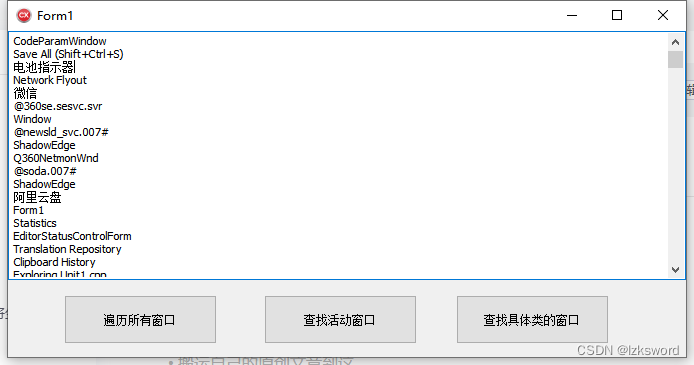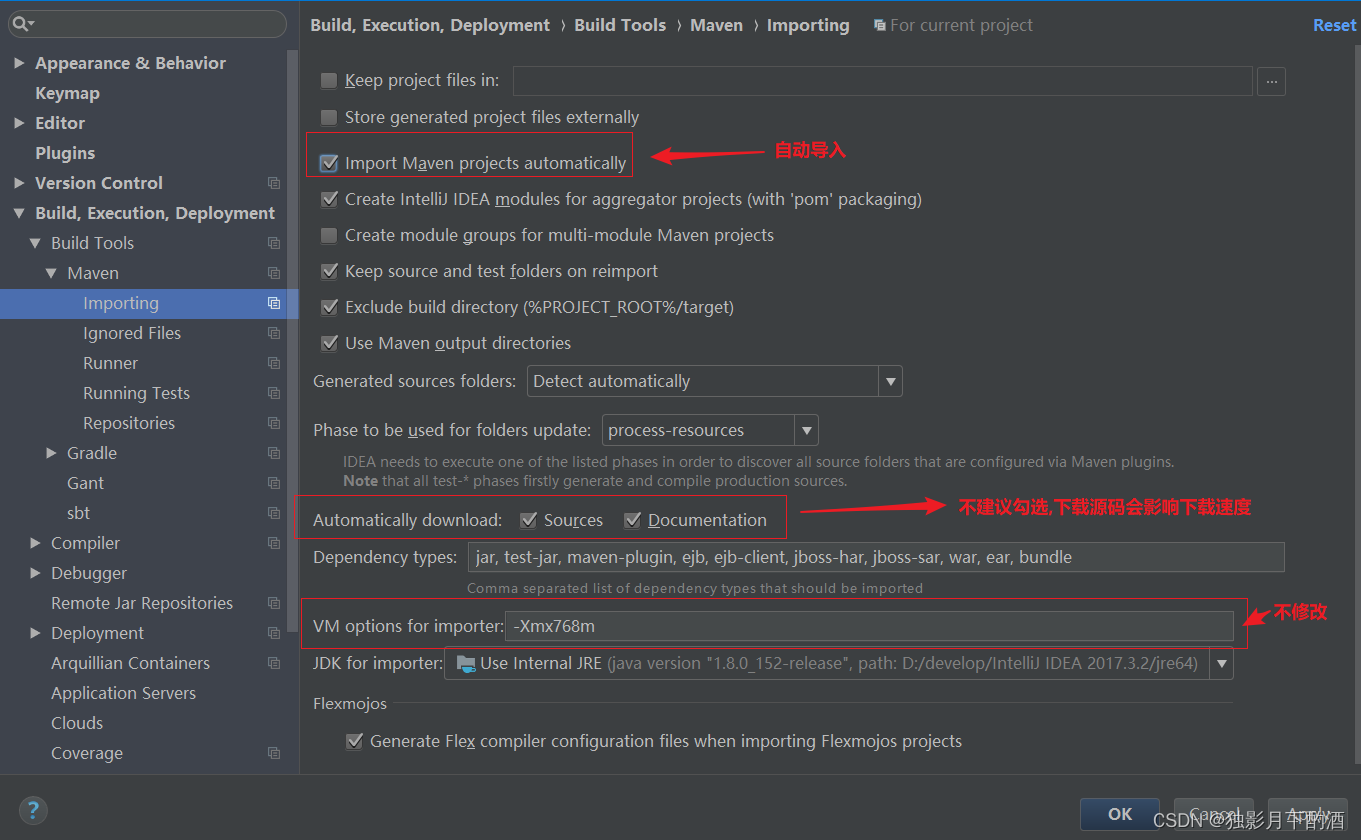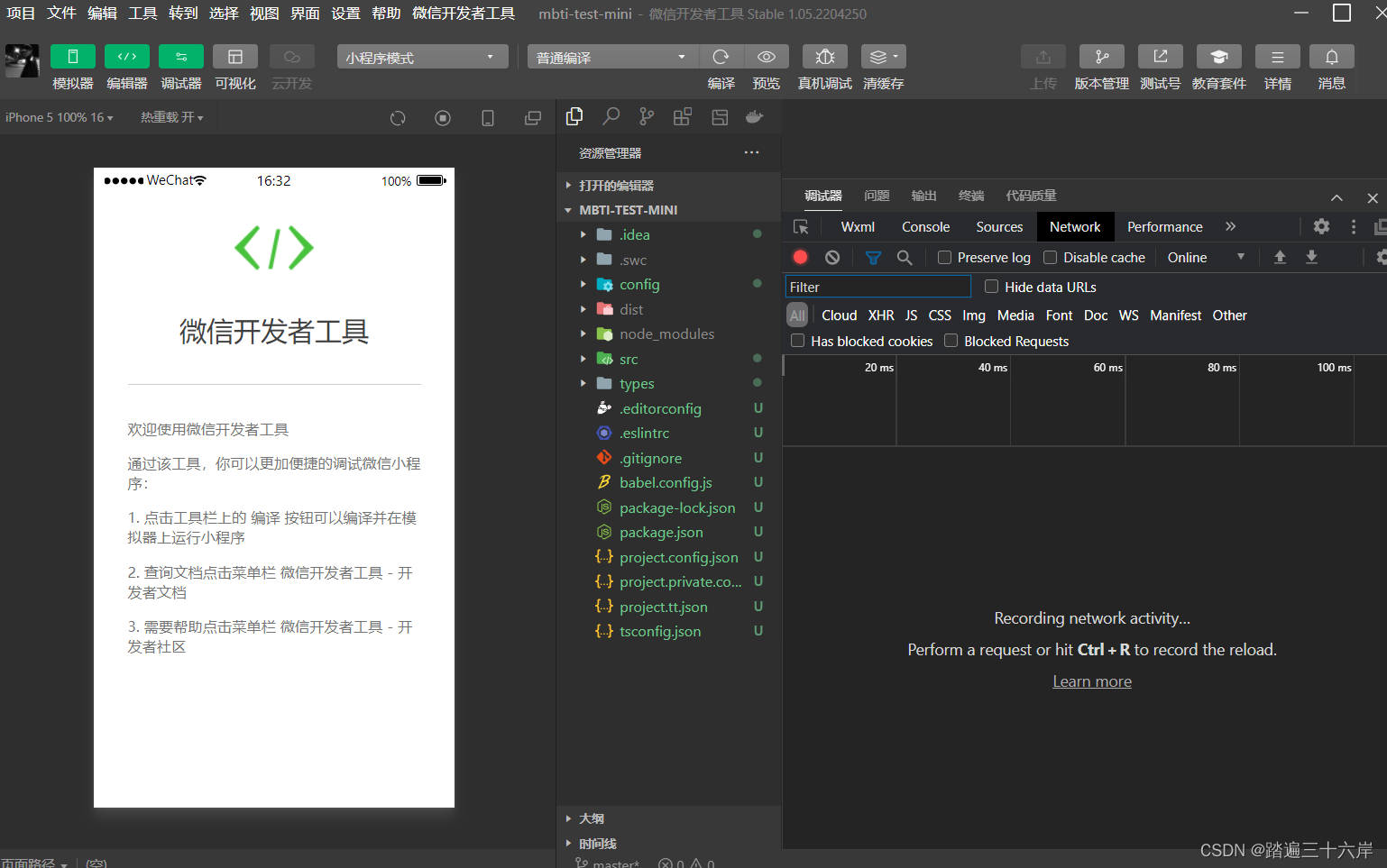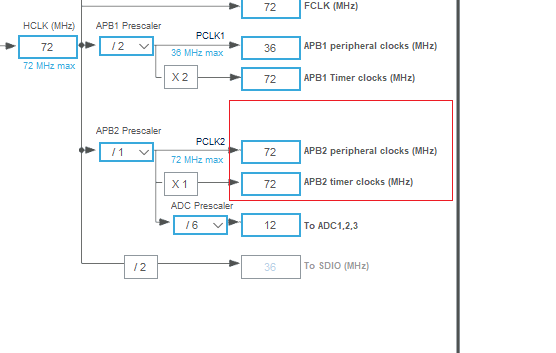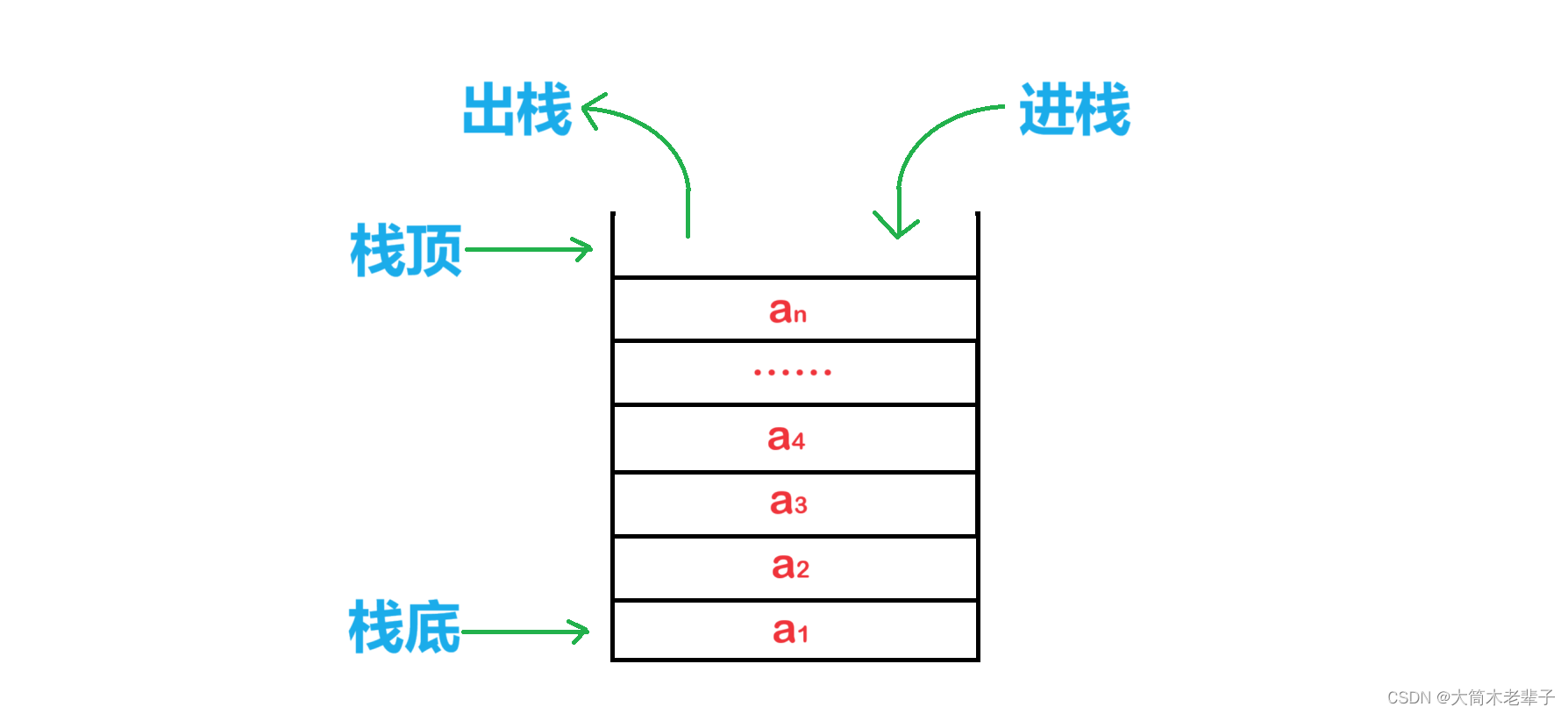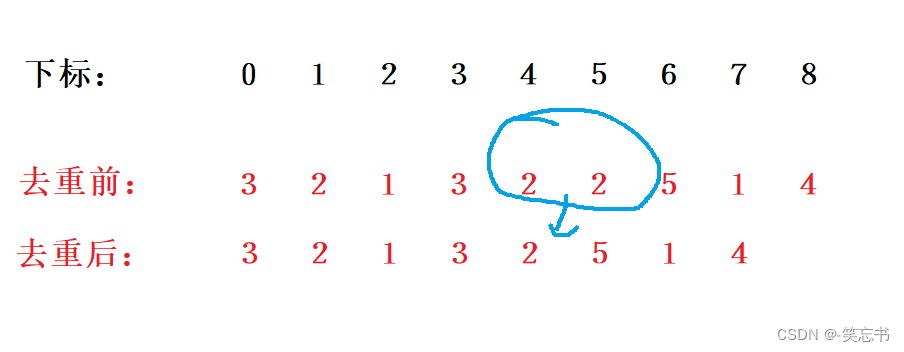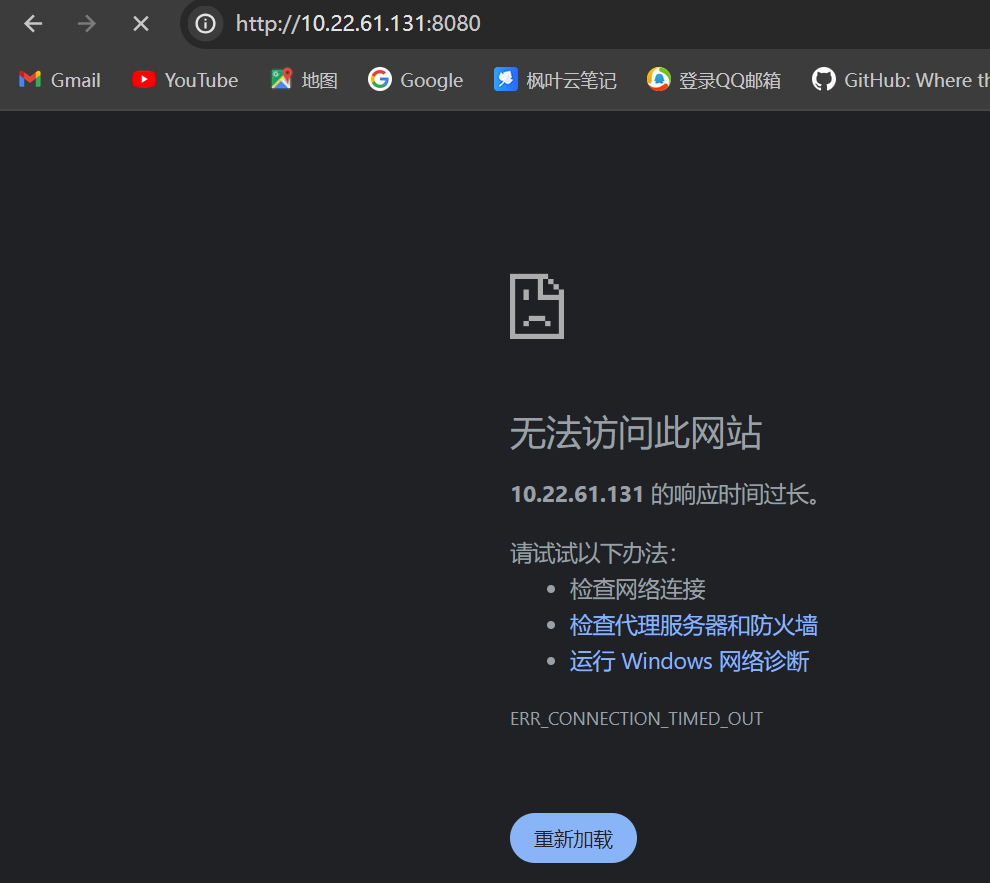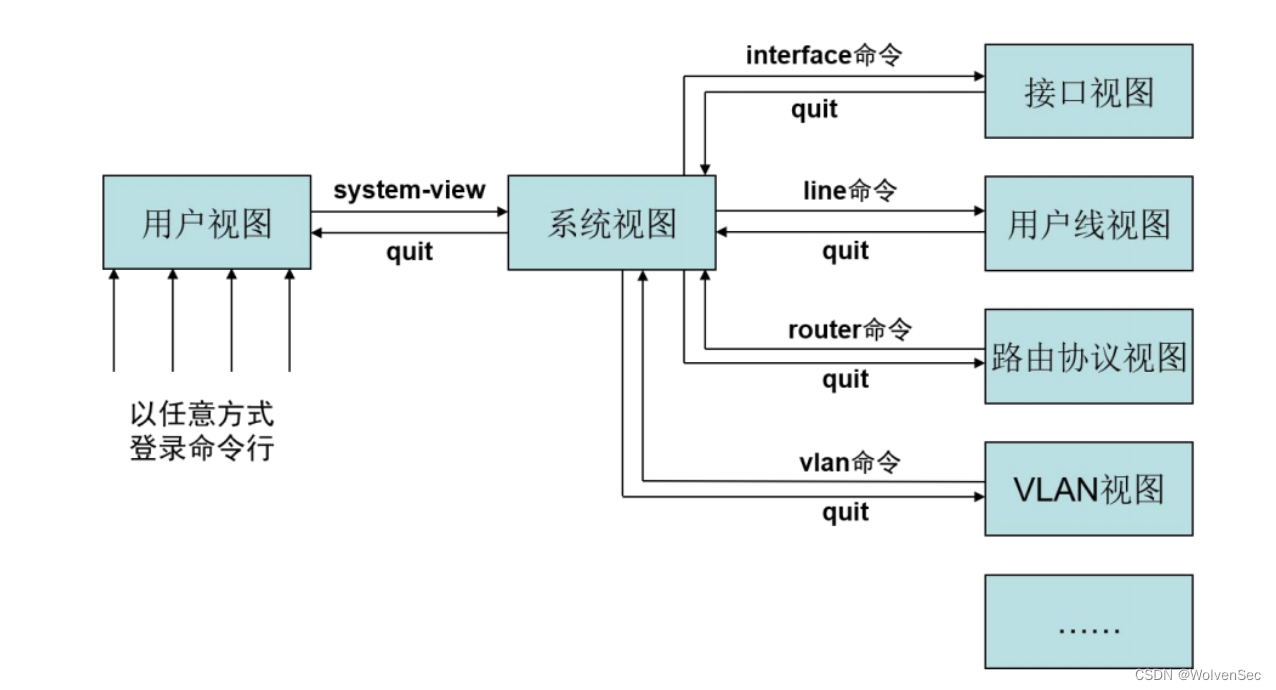文章目录
- 前言
- 初阶题目
- 1.字符串
- 2.列表
- 3.元组
- 4.字典
- 5.运算
- 6.random 模块
- 7.open函数
- 8.time模块时间
- 9.其他
- 进阶题目
前言
本文主要是python经典题目100题,适合入门的新手。仅作自己学习的记录。
初阶题目
1.字符串
- 题目1:怎么找出序列中的最⼤最⼩值?
方法:使用内置函数max()和min()。
print(max([x for x in range(5)]))
print(min([x for x in range(5)]))
l=(233,456,445)
print(max(l))
print(min(l))
- 题目2: 怎么将字符列表转为字符串?
方法一:
list1=['hello','world']
str1=list1[0]
str2=list1[1]
print(str1+' '+str2)
方法二: 使用join方法,合并序列的元素,推荐!!!
功能:join() 方法用于将序列中的元素以指定的字符连接生成一个新的字符串。
语法:string.join()
list1=['hello','world']
str1=' '.join(list1)
print(str1)
- 题目3:怎么快速打印出包含所有 ASCII 字⺟(⼤写和⼩写)的字符串?
import string
string.ascii_letters
- 题目4: 怎么让字符串居中?
方法:使用字符串中的center方法。
功能:返回一个指定宽度width居中的字符串,length为所返回字符串的长度。fillchar为填充的字符,默认为空格。
语法:string.center(length, character)
str1='hello'
str1.center(50)
str1.center(50,'###')
- 题目5:怎么在字符串中找到⼦串?
方法:使用find方法。
功能:检测字符串中是否包含子字符串 str 。如果找到,就返回子串的第一字符的索引值,如果找不到,则返回-1。
语法:string.find(value,start,end)
str1='hello world'
str1.find('h')
str1.find('w')
- 题目6:怎么让字符的⾸字⺟⼤写,其他字⺟⼩写?
方法一:使用title方法。
功能:所有单词的首个字母转化为大写,其余字母均为小写。
语法:string.title()
str1='hello world'
str1.title()
方法二:使用capwords方法
import string
str1='hello world'
string.capwords(str1)
- 题目7:怎么批量替换字符串中的元素?
方法一:使用replace()方法。
str1="hello"
str1.replace('l','w')
方法二:使用re模块的sub方法。
import re
str1="hello"
re.sub('l','w',str1)
- 题目8:怎么把字符串按照空格进⾏拆分?
方法一:使用split方法,括号为空的情况下默认为空格拆分 。
str1="hello world hello"
str1.split()
方法二:使用re模块下的split方法。
str1="hello world hello"
import re
re.split(r'\s+',str1)
- 题目9:怎么去除字符串⾸位的空格?
方法:用strip方法
str1=" hello world "
str1.strip()
2.列表
- 题目10:怎么清空列表内容?
方法一:使用del方法清除整个列表,删除后表不存在了。
list1=[x for x in range(5)]
del list1
方法二:使用clear方法,删除后表为空。
list1=[x for x in range(5)]
list1.clear()
方法三:使用切片赋值方法,删除后表为空。
list1=[x for x in range(5)]
list1[:]=[]
list1
- 题目11:怎么计算指定的元素在列表中出现了多少次?
方法:使用count方法。
list1=[x for x in np.random.randint(40,90,10)]
list1.count(40)
- 题目12:怎么在列表末尾加⼊其它元素?
方法:使用extend方法。
list1=[x for x in range(5)]
list2=[x for x in np.random.randint(1,10,3)]
list1.extend(list2)
- 题目13:extend 和列表相加的区别?
两者效果看起来是一致的,但是extend是直接在list1列表里加入元素,相加会生成一个新的列表,list1本质没有改变。
- 题目14:怎么查找列表中某个元素第⼀次出现的索引,从 0 开始?
list1=[x for x in range(1,5)]
list1.index(3)
- 题目15:怎么将⼀个对象插⼊到列表中?
方法一:使用append方法。在最后插入一个对象。
list1=[x for x in range(1,5)]
list1.append(6)
可以指定元素位置后插入。
方法一:使用insert方法。
list1=[x for x in range(1,5)]
list1.insert(2,6)
方法二:使用切片方法。
list1=[x for x in range(1,5)]
list1[2:2]=['hello']
- 题目16:怎么删除列表中元素?
方法:使用pop方法。
删除单个元素,按位删除(根据索引删除),默认为列表对象最后一个元素,list.pop(i)则删除下标为i的元素,删除时会返回被删除的元素。
list1=[x for x in range(10)]
list1.pop[3]
- 题目17:怎么删除列表中指定元素?
方法:使用remove方法,删除第一次出现的元素。
list1=[x for x in range(10)]
list.remove(5)
- 题目18:怎么让列表按相反顺序排列?
方法一:使用reverse方法。
list1=[x for x in range(10)]
list1.reverse()
方法二:使用切片的方式。
list1=[x for x in range(10)]
list1[::-1]
3.元组
- 题目19:怎么表示只包含⼀个元素的元组?
1个元素的元组,必须在唯一的元素后面加上逗号。
tup1=('hello',)
print(type(tup1))
4.字典
- 题目20:怎么给字典中不存在的key指定默认值?
方法一
dic1={"a":"hell0","b":"world"}
dic1.get('aa','N/A')
方法二
dic1={"a":"hell0","b":"world"}
dict1["c"]="mary"
dict1
参考链接:https://www.runoob.com/python/att-dictionary-get.html
- 题目21:花括号{} 是集合还是字典?
字典
type({})
5.运算
基本运算
- 题目22:怎么计算2的3次⽅?
方法一:使用运算符**。
print(2**3)
方法二: 用pow()函数,pow(x,y)返回 x 的 y 次方的值
print(pow(2,3))
- 题目23:怎么快速求 1 到 100 所有整数相加之和?
方法一:使用sum方法
print(sum(range(1,101)))
方法二:使用while方法
a=0
b=0
while a<100:
a=a+1
b=b+a
print(b)
方法三:使用for方法
a=0
for i in range(1,101):
a=a+i
print(a)
集合运算
- 题目24:怎么求两个集合的并集?
方法一:使用union方法。
set1={"a","b","c","d","e","f"}
set2={"a","b","c","d","g","h"}
print(set1.union(set2))
方法二:使用运算符 | 。
set1={"a","b","c","d","e","f"}
set2={"a","b","c","d","g","h"}
print(set1|set2)
- 题目25:求两个集合的交集?
方法一:使用运算符 & 。
set1={"a","b","c","d","e","f"}
set2={"a","b","c","d","g","h"}
print(set1&set2)
方法二:使用intersection方法。
set1={"a","b","c","d","e","f"}
set2={"a","b","c","d","g","h"}
print(set1.intersection(set2))
- 题目26:求两个集合中不重复的元素?
方法一:使用运算符 ^ 。
set1={"a","b","c","d","e","f"}
set2={"a","b","c","d","g","h"}
print(set1^set2)
方法二:使用 symmetric_difference 方法。
set1={"a","b","c","d","e","f"}
set2={"a","b","c","d","g","h"}
print(set1.symmertric_differece(set2))
- 题目27:求两个集合的差集?
方法一:使用运算符 - 。
set1={"a","b","c","d","e","f"}
set2={"a","b","c","d","g","h"}
print(set1-set2)
方法二:使用differece方法。
set1={"a","b","c","d","e","f"}
set2={"a","b","c","d","g","h"}
print(set1.differece(set2))
6.random 模块
- 题目28:怎么从⼀个⾮空序列中随机选择⼀个元素?
方法:使用random中的choice方法。
import random
list1=[x for x in range(1,10)]
random.choice(list1)
- 题目29:从⼀个序列中随机返回 n 个不同值的元素?
方法:使用random中sample方法。
import random
list1=[x for x in range(10,100)
sample_num=5
random.sample(list1,sample_num)
- 题目30:怎么⽣成两个数之间的随机实数?
方法一:使用random.randint()生成随机整数
import random
random.randint(1,100)
方法二:使用random.uniform()生成随机的浮点数
import random
random.uniform(1,100)
- 题目31:怎么在等差数列中随机选择⼀个数?
方法一:使用random.choice()方法。
import random
random.choice([x for x in range(1,100,10)])
方法二:使用用random.randrange()可以指定步长。
import random
random.randrange(0,100,10)
- 题目32:怎么随机打乱列表的顺序?
方法:使用random模块里的shuffle方法。
import random
list1=[x for x in range(10)]
print(list1)
random.shuffle(list1)
print(list1)
参考链接:https://blog.csdn.net/m0_46090675/article/details/113818633
7.open函数
- 题目33:怎么在⽂件⾥写⼊字符?
方法:用open函数,模式用w。
file_path=""
content="hello world"
with open(file_path,'w') as file:
file.write(content)
- 题目34:怎么读取⽂件内容?
方法:用open函数,模式用r(默认情况下是r)。
file_path=""
with open(file_path,"r",encoding="utf-8") as f:
res=f.read()
print(res)
8.time模块时间
- 题目35:怎么将当前时间转为字符串?
方法一:使用time模块里的asctime方法。若未输入参数,返回当前时间字符串的形式。
import time
time.asctime()
print(type(time.asctime()))
方法二:使用datetime下面的strftime方法。
import datetime
time1=datetime.datetime.now()
print(time1)
print(type(time1))
time2=time1.strftime('%Y-%m-%d %H:%M:%S')
print(time2)
print(type(time2))
- 题目36:怎么将秒数转为时间数组?
方法:使用time模块里面的localtime方法。
import time
seconds = 1555840541.92
timeArray = time.localtime(seconds)
print(timeArray)
- 题目37:将时间元组转换为从新纪元后的秒数?
方法:使用time模块里面的mktime方法。
import time
time.mktime((2023,11,6,17,14,48,1,311,0))
- 题目38:怎么将字符串转为时间元组?
方法:使用time模块里的strptime方法。
import time
time.strptime('2023-11-23', '%Y-%m-%d')
9.其他
- 题目39:怎么查出模块包含哪些属性?
方法:使用dir()函数查看模块的属性与方法
dir(str)
- 题目40:怎么快速查看某个模块的帮助⽂档?
方法:使用__doc__查看某个模块下面的注释的内容。
str.__doc__
- 题目41:怎么快速启动浏览器打开指定⽹站?
方法:使用webbrowser
import webbrowser
path = "C:\Program Files (x86)\Microsoft\Edge\Application\msedge.exe"
webbrowser.register('edge', None, webbrowser.BackgroundBrowser(path))
browser = webbrowser.get('edge')
browser.open('www.baidu.com')
参考链接:https://blog.csdn.net/wangyuxiang946/article/details/132231956
- 题目42:Python⾥占位符怎么表示?
用pass占位,当你没有想好代码块的逻辑时,你需要运行代码调试其他功能,需要加占位符,不然会报错。
if name="lily":
print("hello")
elif name="mary":
pass
- 题目43:怎么给函数编写⽂档?
在def语句后面注释文档放在引号(单引、双引、三引都可以)里面就行,文档可以通过func1.__doc__访问。
def func1():
"""返回变量值"""
x="hello world"
return x
func1.__doc__
- 题目44:怎么定义私有⽅法?
定义:私有方法是指只能在类内调用。
语法:在方式名称前加两个斜杠__
注意:⽤ from module import * 导⼊时不会导⼊私有⽅法
class Dog():
def __init__(self,age,color,name='lily'):
self.name=name
self.age=age
self.color=color
def __hello(self):
print("我的名字是{},我{}岁了".format(self.name,self.age))
x=Dog(5,'yellow')
x.__hello() ##报错
x._Dog__hello()
- 题目45:怎么判断⼀个类是否是另⼀个类的⼦类?
方法一:使用内置函数 issubclass()
语法:issubclass(class, classinfo),class是待检查的类,classinfo是一个类或一个由类对象组成的元组。如果class是classinfo的子类或者是classinfo中的任意类的子类,则返回True;否则返回False。
class Father():
pass
class Son(Father):
pass
print(issubclass(Father,Son))
print(issubclass(Son,Father))
方法二:使用内置函数isinstance()
语法:isinstance(object, classinfo),object是待检查的对象,classinfo是一个类或一个由类对象组成的元组。如果object是classinfo的实例或者是classinfo中的任意类的实例,则返回True;否则返回False。
class Father():
pass
class Son(Father):
pass
print(isinstance(Father,Son))
print(isinstance(Son,Father))
- 题目46:怎么查出通过 from xx import xx导⼊的可以直接调⽤的⽅法?
方法:使用all方法,这个方法查出的是模块下不带_的所有方法,可以直接调用。
import random
random.__all__
- 题目47:怎么把程序打包成 exe ⽂件?
方法:⽤ Setuptools ⾥的 py2exe 库
- 题目48:怎么把程序打包称 Mac 系统可运⾏的 .app ⽂件?
安装py2app
pip install py2app
cd 到demo.py文件所在的目录
py2applet --make-setup demo.py
- 题目49:怎么获取路径下所有⽬录名称?
方法:使⽤ sys 下的 path ⽅法,返回的是⽬录名称的字符串列表。
import sys
sys.path
- 题目50:Python 环境下怎么执⾏操作系统命令?
⽅法:使⽤ os 模块下的 system ⽅法。
import os
os.system("cd /User/")
进阶题目
- 题目51:怎么⽤for循环实现把字符串变成Unicode码位的列表?
方法:ord(c)函数,c表示字符,返回值是对应的十进制整数。
str="hello world"
list1=[]
for i in str:
list1.append(ord(i))
print(list1)
##输出:
[104, 101, 108, 108, 111, 32, 119, 111, 114, 108, 100]
- 题目52:怎么⽤列表推导式实现把字符串变成Unicode码位的列表?
str="hello world"
[ord(x) for x in str]
##输出:
[104, 101, 108, 108, 111, 32, 119, 111, 114, 108, 100]
- 题目53:打印出两个列表的笛卡尔积?
方法一:使用for循环。
list1=[x for x in range(1,5)]
list2=['a','b','c']
for tshirt in ('%s %s'%(c,s) for c in list1 for s in list2):
print(tshirt)
# 输出:
1 a
1 b
1 c
2 a
2 b
2 c
3 a
3 b
3 c
4 a
4 b
4 c
方法二:使用itertools里的product生成器函数。
import itertools
list1=[x for x in range(1,5)]
list2=['a','b','c']
result=list(itertools.product(list1,list2))
# 输出:
[(1, 'a'),
(1, 'b'),
(1, 'c'),
(2, 'a'),
(2, 'b'),
(2, 'c'),
(3, 'a'),
(3, 'b'),
(3, 'c'),
(4, 'a'),
(4, 'b'),
(4, 'c')]
- 题目54:可迭代对象拆包时,怎么赋值给占位符?
方法: 用for循环提取元组里的元素,对于我们不想接收的元素,我们可以用占位符 _ 接收。
tuple_infos=[('lily','24'),('James','30'),('mary','45')]
for names,_ in tuple_infos:
print(names)
# 输出:
lily
James
mary
- 题目55:Python3 中,⽤什么⽅式接收不确定值或参数?
方法:*args位置可以在任意位置。
a,b,*c=range(8)
a,b,c
# 输出:(0, 1, [2, 3, 4, 5, 6, 7])
a,*b,c,d=range(5)
a,b,c,d
# 输出:(0, [1, 2], 3, 4)
*a,b,c,d=range(5)
a,b,c,d
# 输出:([0, 1], 2, 3, 4)
参考链接:https://blog.csdn.net/sodaloveer/article/details/134165294
- 题目56:⽤切⽚讲对象倒序?
list1=[x for x in range(1,10)]
list1[::-1]
# 输出:[9, 8, 7, 6, 5, 4, 3, 2, 1]
- 题目57:怎么查看列表的 ID?
方法:使用id函数。
l=[1,2,3]
id(l)
# 输出:2370660297728
- 题目58:可变序列⽤*=(就地乘法)后,会创建新的序列吗?
不会。可变序列用*=后,不会创建新的序列,新元素追加到老元素之上,新老列表的id是相等的。
a=[1,2,3]
print('旧列表的id:',id(a))
a*=2
print("*=(就地乘法)后列表:",a)
print('旧元组的id:',id(a))
# 输出:
# 旧列表的id: 1554734688192
# *=(就地乘法)后列表: [1, 2, 3, 1, 2, 3]
# 旧元组的id: 1554734688192
按序列能否被修改,可以将python序列分为可变和不可变序列。
可变序列:可以进行增、删、改等操作序列。比如:列表、集合。
不可变序列:元组、字符串。
- 题目59:不可变序列⽤*=(就地乘法)后,会创建新的序列吗?
会,不可变序列用*=后,会创建新的序列,看下面的例子,新老元组的id是不同的。
t=(1,2,3)
print('旧元组的id:',id(t))
t*=2
print("*=(就地乘法)后元组:",t)
print('旧元组的id:',id(t))
# 输出:
# 旧元组的id: 1554729209600
# *=(就地乘法)后元组: (1, 2, 3, 1, 2, 3)
# 旧元组的id: 1554729054272
注意: 对不可变序列进行重复拼接操作的话,效率会很低,因为每次都有一个新对象,而解释器需要把原来对象中的元素先复制到新的对象里,然后再追加新的元素。
关于序列相关应用参考:https://zhuanlan.zhihu.com/p/33488349
- 题目60:关于+=的⼀道谜题。
t=(1,2,[10,20])
t[2]+=[50,60]
到底会发生下面4种情况中的哪一种?
a. t会变成(1, 2, [10, 20, 50, 60])。
b. 因为tuple不支持对它的元素赋值,所以会出现TypeError异常。
c. 以上两个都不是。
d. a和b都是对的。

t
# 输出:
(1, 2, [10, 20, 50, 60])
答案是d。
-
- a+=b 和 a.extend(b) 一样的效果。
list1=[x for x in range(10)]
list1+=[20,30] # 输出:[0, 1, 2, 3, 4, 5, 6, 7, 8, 9, 20, 30]
list1.extend([20,30]) # 输出:[0, 1, 2, 3, 4, 5, 6, 7, 8, 9, 20, 30]
- 题目61:sort() 和 sorted() 区别?
1、sort 是应用在list上的方法,属于列表的成员方法;sorted可以对所有迭代的对象进行排序操作。
2、list的sort方法返回的是对已经存在的列表进行操作,而内建函数sorted方法返回的是一个新的list,而不是在原来的基础上进行的操作。
3、sort使用方法为list.sort(),sorted使用方法为sorted(list)。
list1=[1,100,90,23]
list1.sort()
print(list1)
# 输出:
# [1, 100, 90, 23]
list1=[1,100,90,23]
list3=sorted(list1)
print(list1,'\n',list3)
# 输出:
# [1, 100, 90, 23]
# [1, 23, 90, 100]
参考链接:https://blog.csdn.net/u013759354/article/details/80243705
- 题目62:怎么通过 reverse 参数对序列进⾏降序排列?
reverse参数一般放在sorted()方法里面,reverse默认值为False,序列默认升序排列,降序排列的话需要将reverse的值设置为True。
list1=[1,100,90,23]
list2=sorted(list1,reverse=True)
print(list2)
# 输出:
# [100, 90, 23, 1]
参考链接:https://blog.csdn.net/qq_27003337/article/details/104974498
- 题目63:numpy 怎么把⼀维数组编程⼆维数组?
方法一:直接操作shape属性。
import numpy as np
a=np.arange(6)
a.shape
# 输出:
# (6,)
a.shape=(2,3)
a
# 输出:
# array([[0, 1, 2],
# [3, 4, 5]])
方法二:利用np.reshape()。
import numpy as np
a=np.arange(6)
a.shape
# 输出:
# (6,)
a
# 输出:
# array([0, 1, 2, 3, 4, 5])
np.reshape(a,(2,3)).shape
# 输出:
# (2, 3)
参考链接:https://www.zhihu.com/question/59563149
- 题目64:快速插⼊元素到列表头部?
方法一:利用切片。
list1=[x for x in range(1,5)]
list1[0:0]='hello'
list1
# 输出:
# ['h', 'e', 'l', 'l', 'o', 1, 2, 3, 4]
方法二:超低频insert()方法插入,第一参数是位置的坐标,从0开始。
list1=[x for x in range(5)]
list1.insert(0,'first')
list1
['first', 0, 1, 2, 3, 4]
方法三:利用deque类。
在第一个元素之前添加一个元素之类的操作是很耗时的,因为这些操作会牵扯到移动列表里的所有元素。
利用deque类可以更高效,deque类可以指定这个队列的大小, 如果这个队列满员了,还可以从反向端删除过期的元素,然后在尾端添加新的元素。
from collections import deque
dp=deque(range(10),maxlen=15)
dp
# 输出:
# deque([0, 1, 2, 3, 4, 5, 6, 7, 8, 9])
dp.appendleft(-1)
dp
# 输出:
# deque([-1, 0, 1, 2, 3, 4, 5, 6, 7, 8, 9])
- 题目65:字典的创建⽅法?
方法一:直接创建。
dict1={'a':1,'b':2,'c':3}
dict2=dict(zip('abc','123'))
dict3=dict(a=1,b=2,c=3)
dict4=dict([('a',1),('b',2),('c',3)])
方法二:用字典推导构建字典。
dial_code=[(1,'a'),(2,'b'),(3,'c')]
coutry_code = {coutry:code for code, coutry in dial_code}
coutry_code
# 输出:
# {'a': 1, 'b': 2, 'c': 3}
- 题目66:通过⼀次查询给字典⾥不存的键赋予新值?
方法一:用setdefault方法只查询一次效果更快。
dict1={'a':1,'b':2,'c':3}
dict1.setdefault('d',[]).append(4)
dict1
# 输出:
# {'a': 1, 'b': 2, 'c': 3, 'd': [4]}
方法二:用if方法,要查询三次。
dict1={'a':1,'b':2,'c':3}
if 'd' not in dict1.keys():
dict1['d']=[]
dict1['d'].append(4)
print(dict1)
# 输出:
# {'a': 1, 'b': 2, 'c': 3, 'd': [4]}
在python3中dict.keys()的返回值是一个“视图”,视图就像一个集合,跟字典类似的,在视图里查找一个元素的速度很快。
- 题目67:怎么统计字符串中元素出现的个数?
方法:用collections中的Counter方法统计,返回的结果是对应元素和个数形成的键值对。
import collections
str1="hello hello hello world"
ct=collections.Counter(str1)
ct
# 输出:
# Counter({'h': 3, 'e': 3, 'l': 7, 'o': 4, ' ': 3, 'w': 1, 'r': 1, 'd': 1})
-
- 怎么统计出排名前n的元素?
方法:用most_common方法,比如前两名的话,n=2。
ct.most_common(2)
# 输出:
# [('l', 7), ('o', 4)]
- 题目68:列表去重?
方法一:用for循环进行遍历。
list1=[1,11,1,1,8,2]
list2=[]
for x in list1:
if x not in list2:
list2.append(x)
print(list2)
# 输出:
# [1, 11, 8, 2]
方法二:利用set自动去重功能。
list1=[1,11,1,1,8,2]
list2=list(set(list1))
print(list2)
# 输出:
# [1, 11, 8, 2]
方法三:利用set+索引,可以保证去重后的顺序不变。
list1=[1,11,1,1,8,2]
list2=list(set(list1))
list2.sort(key=list1.index)
# 输出:
# [1, 11, 8, 2]
参考链接:https://blog.csdn.net/JohinieLi/article/details/81182771
- 题目69:求m中元素在n中出现的次数?
方法一:基础求法。
m=['a','b','c']
n=['a','b','c','d','e']
find=0
for i in m:
if i in n:
find+=1
print(find)
# 输出:3
方法二:用集合取交集
m=['a','b','c']
n=['a','b','c','d','e']
len(set(m)&set(n)) # 输出:3
len(set(m).intersection(n)) # 输出:3
如果m和n不是集合,直接转换后再取交集。
- 题目70:新建⼀个Latin-1字符集合,该集合⾥的每个字符的Unicode名字⾥都有“SIGN”这个单词,⽤集合推导式完成。
from unicodedata import name
{chr(i) for i in range(32,256) if 'SIGN' in name(chr(i),'')}
# 输出:
{'#',
'$',
'%',
'+',
'<',
'=',
'>',
'¢',
'£',
'¤',
'¥',
'§',
'©',
'¬',
'®',
'°',
'±',
'µ',
'¶',
'×',
'÷'}
- 题目71:查询系统默认编码⽅式?
方法一:sys.getdefaultencoding()方法。
import sys
sys.getdefaultencoding() # 输出:'utf-8'
方法二
fp=open('test.txt','w')
fp.encoding # 输出:'utf-8'
- 题目72:修改编码⽅式?
方法一:sys.setdefaultencoding()方法。
import sys
sys.setdefaultencoding('utf-8')
方法二
fp=open('test.txt','w',encoding='utf-8')
fp.encoding
- 题目73:⽤递归实现阶乘?
5=5*4*3*2*1
4=4*3*2*1 这种形式叫做阶乘
递归:一个函数自己调用自己。
def getNum(num):
if num>1:
return num * getNum(num-1)
else:
return num
def factorial(n):
"""return n!"""
return 1 if n<2 else n*factorial(n-1)
- 题目74:all([])的输出结果是多少?
方法:all()函数用于判断给定的可迭代参数iterable中的所有元素是否为True,如果是返回True,否则返回False。
元素除了是0,空,None,False外都算True。
all([])
# 输出:True
注意:空元组、空列表返回值都为True。
- 题目75: any([])的输出结果是多少?
方法:any()用于判断给定的可迭代参数iterable是否全部为False,则返回False,如果有一个为True,则返回True。
any([])
# 输出:False
- 题目76:怎么判断对象是否可被调⽤?
方法一:使用内置的callable函数。
callable(func),用于检查对象是否可调用,返回True也可能调用失败,但是返回False一定不可调用。
[callable(obj) for obj in (abs,str,2)]
# 输出:[True, True, False]
方法二:判断对象类型是否是FunctionType。
(from types import FunctionType)
- 方式一:type(func) is FunctionType
- 方式二:isinstance(func,FunctionType)
def func1():
return 1
from types import FunctionType
[type(obj) is FunctionType for obj in (func1,str,2)] # 输出:[True, False, False]
isinstance(func1,FunctionType) # 输出:True
方法三:判断对象是否实现__call__方法。
hasattr(func,‘call’)
[hasattr(obj,'__call__') for obj in (abs,str,2)] # 输出:[True, True, False]
参考链接:https://blog.csdn.net/sinat_38682860/article/details/105074130
- 题目77:怎么列出对象的所有属性?
方法:使用dir()函数。
import sys
dir(sys)
- 题目78:怎么得到类的实例没有函数⽽有属性的列表?
方法:创建一个空的用户定义的类和空的函数,计算差集,让后排序。
class C:
pass
obj=C()
def func():
pass
sorted(set(dir(func))-set(dir(obj)))
# 输出:
['__annotations__',
'__call__',
'__closure__',
'__code__',
'__defaults__',
'__get__',
'__globals__',
'__kwdefaults__',
'__name__',
'__qualname__']
- 题目79:函数中,不想⽀持数量不定的定位参数,但是想⽀持仅限关键字参数,参数怎么定义?
方法:在关键字参数前加一个*。
def func1(a,*,b):
return a,b
func1(1,b='hello')
#输出:
#(1, 'hello')
- 题目80:怎么给函数参数和返回值注解?
代码执行时,注解不会做任何处理,只是存储在函数_annotations__属性(一个字典)中。
函数声明中的各个参数可以在:之后增加注解表达式,如果参数有默认值,注解放在参数名和=号之间,如果想注解返回值,在)和函数声明末尾的:之间添加->和一个表达式。
def function(text:str,max_len:"int>0"=80) -> str:
- 题目81:不使⽤递归,怎么⾼效写出阶乘表达式?
方法:通过reduce和operator.mul函数计算阶乘
from functools import reduce
from operator import mul
def fact(n):
return reduce(mul,range(1,n+1))
fact(5)
- 题目82:Python什么时候执⾏装饰器?
函数装饰器在导入模块时立即执行,而被装饰的函数只在明确调用时运行,这突出了python程序员所说的导入时和运行时之间的区别。
- 题目83:判断下⾯语句执⾏是否会报错?
b=3
def func(a):
print(a)
print(b)
b=7
func(1)
会报错,python编译函数的定义体时 ,先做了一个判断 ,那就是b是局部变量,因为在函数中给它赋值了,但是执行print(b)时,往上又找不到b的局部值,所以会报错。
- 题目84:怎么强制把函数中局部变量变成全局变量?
如何理解局部变量与全部变量,请参考:https://blog.csdn.net/sodaloveer/article/details/132988232
方法:用global声明
b=3
def func(a):
global b
print(a)
print(b)
b=7
b=10
func(3)
# 输出:
3
10
- 题目85:闭包中,怎么对数字、字符串、元组等不可变元素更新?
方法:nonlocal声明,把变量标记为自由变量。
def func1():
a=1
b=2
def func2(c):
a+=1
b+=c
return a/b
return func2
result=func1()
result(10)
# 报错:UnboundLocalError: local variable 'a' referenced before assignment
def func1():
a=1
b=2
def func2(c):
nonlocal a,b
a+=1
b+=c
return a/b
return func2
result=func1()
result(10)
# 输出:
0.16666666666666666
- 题目86:测试代码运⾏的时间?
方法一:time模块里的perf_counter方法。
import time
t0=time.perf_counter()
for i in range(10000):
pass
t1=time.perf_counter()
t1-t0 # 输出:0.0003746999973373022
方法二:time.time()
import time
t0=time.time()
for i in range(10000):
pass
t1=time.time()
t1-t0 # 输出:0.0009982585906982422
- 题目87:怎么优化递归算法,减少执⾏时间?
方法:使用装饰器 functools.lru_cache()缓存数据
import functools
@functools.lru_cache()
def fibonacci(n):
if n<2:
return n
return fibonacci(n-2)+fibonacci(n-1)
fibonacci(6) # 输出:8
- 题目88:⽐较两个对象得值(对象中保存的数据)是否相等?
方法:用 == 运算符比较
a=[1,2,3]
b=[1,2,3]
a==b # 输出:True
- 题目89:⽐较两个对象得内存地址 id 是否相等?
方法:用is比较,id一定是唯一的数值标注,而且在对象的生命周期中绝对不会变
a=[1,2,3]
b=[1,2,3]
a is b # 输出:False
- 题目90:怎么格式化显示对象?
方法:
format(my_obj,format_spec)的第二个参数
str.format()方法,{}里代换字段中置换后面的部分。
print('{:.2%}'.format(0.25)) # 输出:25.00%
参考链接:https://blog.csdn.net/sodaloveer/article/details/134133286
- 题目91:复制⼀个序列并去掉后 n 个元素。
方法:利用切片思想。
list1=[x for x in range(5)]
list2=list1[:-2] # 输出:[0, 1, 2]
- 题目92:Python中怎么定义私有属性。什么叫私有属性?
在属性前加两个前导下划线,尾部没有或最多有一个下划线。
- 题目93:怎么随机打乱⼀个列表⾥元素的顺序?
方法:用random里的shuffle方法
from random import shuffle
l=list(range(30))
shuffle(l)
l
- 题目94:怎么判断某个对象或韩式是⼀个已知的类型?
方法:用python的内置函数isinstance()判断
isinstance('aa',str) # 输出:True
- 题目95:怎么打印出分数?
方法:用fractions中的Fraction方法
from fractions import Fraction
print(Fraction(1,3)) # 输出:1/3
- 题目96:+ 和 += 区别?
方法:两边必须是同类型的对象才能相加,+=右操作数往往可以是任何可迭代对象。
list1=[x for x in range(6)]
list1+='gwer'
list1 # 输出:[0, 1, 2, 3, 4, 5, 'g', 'w', 'e', 'r']
list2=list1+(6,7)
#报错:TypeError: can only concatenate list (not "tuple") to list
- 题目97:怎么列出⼀个⽬录下所有的⽂件名和⼦⽂件名?
方法:使用os模块下面的walk,返回一个生成器,该生成器创建一个值元组(current_path,current_path中的目录,current_path中的文件)
os.listdir(path)列出一个目录下面的所有目录与文件名。
import os
dirs=os.walk("F:\\python_test")
for dir in dirs:
print(dir)
- 题目98:怎么返回 1 到 10 的阶乘列表?
import itertools
import operator
list(itertools.accumulate(range(1,11),operator.mul))
# 输出:[1, 2, 6, 24, 120, 720, 5040, 40320, 362880, 3628800]
- 题目99:怎么快速拼接字符串和序列形成新的列表?
方法:用itertools里的chain方法。
import itertools
list(itertools.chain('ABC',range(5)))
# 输出:['A', 'B', 'C', 0, 1, 2, 3, 4]
- 题目100:进度条显示?
方法:用tqdm库
import time
from tqdm import tqdm
for i in tqdm(range(1000)):
time.sleep(.01)

